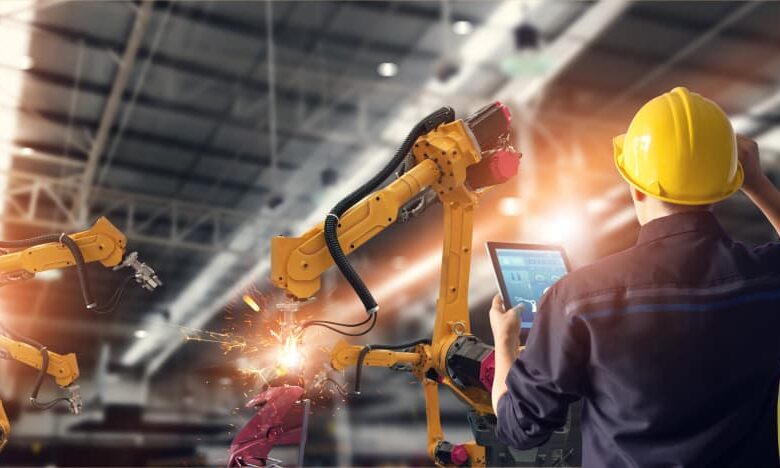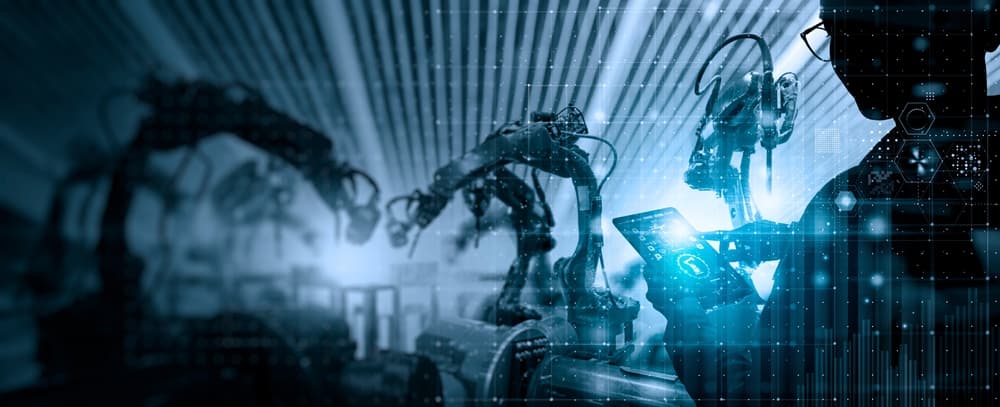
Imagine a construction site where robots work alongside humans, drones buzz overhead, and 3D printers churn out building components. This isn’t science fiction; it’s the reality of automation in construction, a rapidly evolving field that’s poised to revolutionize the way we build.
For centuries, construction has been a labor-intensive industry. But with the rise of automation and robotics, that’s starting to change. These technologies are transforming the way we build, making it faster, safer, and more efficient.
But what exactly is automation in construction? And how is it changing the industry?
In this article“automation and robotics in construction”, we’ll explore the world of automation in construction. We’ll look at the different types of automation being used, the benefits it offers, and the challenges that need to be overcome.
We’ll also answer some of the most common questions about automation in construction, such as:
- Will automation replace construction workers?
- What are the specific skills needed for a career in automated construction?
- How can construction companies prepare for the adoption of automation?
So strap on your hard hat and let’s take a look at the future of construction!
Here are some news-based questions to get you thinking:
- Did you read about the recent breakthrough in 3D printing that could revolutionize the construction industry?
- How are construction companies using drones to improve safety and efficiency?
- What are the latest developments in robotic welding for construction?
Automation in Construction
In our article on “Automation and Robotics in Construction”, we discuss that: The construction industry, traditionally known for its reliance on skilled labor, is undergoing a metamorphosis driven by automation. Imagine robots working alongside humans, drones buzzing overhead, and 3D printers spitting out building components – that’s the reality of construction automation! But what exactly is it, and how is it transforming the way we build?
Breaking Down the Automation Toolbox:
Construction automation isn’t a single invention; it’s a diverse toolbox. Here are the key types revolutionizing the industry:
- Mechanical Marvels: Think high-tech equipment taking over repetitive tasks. Robotic bricklayers and autonomous welding machines are the muscle behind increased efficiency.
- Robotic Revolution: Robots are no longer confined to factory floors. Construction sites are seeing robotic arms tackle complex tasks with unmatched precision, from assembling structures to performing delicate demolition. Did a recent news story showcase the impressive capabilities of construction robots? How are they impacting project timelines and worker safety?
- Digital DNA: Software isn’t just for planning anymore. Digital automation takes center stage with Building Information Modeling (BIM) for seamless coordination, or prefabrication software for streamlined off-site component creation.
Test Your Knowledge: Can you name another industry that heavily relies on automation?
Building a Better Future: Examples in Action
In our article on “Automation and Robotics in Construction”, we discuss that:The possibilities of automation are vast, with these examples showcasing its power:
- Prefab Powerhouse: Prefabricated construction involves building components off-site in controlled environments. Think Lego for buildings! This reduces on-site time, cuts waste, and ensures consistent quality.
- Building in BIM: BIM creates a digital twin of your project, allowing for clash detection (identifying potential issues before construction begins) and better collaboration between architects, engineers, and contractors.
- Drone Delivery (and More!): These aerial workhorses aren’t just for entertainment. Drones are used for surveying sites, capturing aerial photography for progress tracking, and even inspecting hard-to-reach areas. Challenge Yourself: Can you think of another innovative use for drones in construction?
Building Blocks of Success: The Benefits of Automation
In our article on “Automation and Robotics in Construction”, we discuss that:The advantages of automation in construction are compelling:
- Productivity on Steroids: Automation streamlines processes and tackles tasks faster than human labor, leading to significant time savings on projects.
- Safety First: Automating dangerous tasks like working at heights or in confined spaces protects workers and reduces the risk of injuries.
- Quality Counts: Robots and machines can perform tasks with pinpoint precision, leading to consistently high-quality construction.
- Bridging the Gap: The construction industry faces a skilled labor shortage. Automation can address this by taking over repetitive tasks, allowing skilled workers to focus on more complex areas.
- Cost Cuts: While there’s an initial investment, automation can lead to cost savings in the long run due to increased efficiency and reduced waste.
Think Like a Pro: How might automation benefit both construction companies and workers?
Building Bridges, Not Walls: Challenges to Consider
Despite its potential, automation also presents challenges:
- Investment Hurdle: Acquiring and maintaining sophisticated technology comes with a hefty price tag, which might be a hurdle for smaller companies.
- Skilling Up: Automation requires a workforce with new skillsets to operate and maintain the technology. Training and upskilling existing workers are crucial.
- Regulatory Roadmap: New safety protocols and regulations may need to be developed to address the use of autonomous machines and robots on construction sites.
- Project Puzzles: Highly customized or complex projects might not be suitable for complete automation due to their unique requirements.
The Future of Construction is a Collaborative Effort
Automation is not about replacing workers; it’s about collaboration. By embracing these technologies, the construction industry can build a brighter future with increased efficiency, improved safety, and a focus on quality. As the technology continues to evolve, the possibilities for automation in construction are truly limitless.
Revolutionizing Construction: The Toolbox of Automation

The construction site of tomorrow won’t just be filled with hard hats and hammers; it will be a symphony of high-tech tools transforming the industry. Let’s delve into the diverse toolbox of automation revolutionizing construction:
A. Mechanical Marvels: The Muscle Behind Efficiency
Imagine ditching the trowel for a robotic arm that lays bricks with laser precision. That’s the reality of mechanical marvels in construction. These aren’t your clunky factory robots; they’re specialized machines designed to tackle repetitive tasks with unmatched efficiency.
- Robotic Bricklayers: These tireless machines can lay bricks at a rate far exceeding human capabilities, ensuring consistent quality and significantly reducing construction timelines.
- Autonomous Welding Machines: No more sparks and fumes for human welders. Automated welding machines deliver precise, high-quality welds, improving safety and streamlining fabrication processes.
- Self-Driving Excavation Equipment: Move over, bulldozers! Autonomous excavators are taking the wheel, precisely digging trenches and foundations with minimal human intervention, leading to increased safety and reduced risk of errors.
B. Robotic Revolution: Beyond the Repetitive
In our article on “Automation and Robotics in Construction”, we discuss that: Construction robots are no longer confined to factory floors. These sophisticated machines are making their mark on construction sites, tackling complex tasks with surprising dexterity.
- Robotic Arms for Assembly: Imagine robots meticulously assembling intricate structures, from bridges to buildings. These robotic arms offer unmatched precision and tireless operation, allowing for faster construction and reduced reliance on manual labor.
- Delicate Demolition with a Robotic Touch: Demolition work can be dangerous and requires skilled professionals. Robotic demolition machines bring a new level of safety and precision to the process, carefully dismantling structures while minimizing risk to workers and surrounding areas.
- Painting Perfection: Even painting large structures can be automated. Robotic painting systems offer a smooth, even coat with minimal waste and exposure to hazardous materials for workers.
C. Digital DNA: The Software Symphony
Construction automation isn’t just about robots and machines; software plays a crucial role in streamlining processes. Think of it as the digital DNA of the construction site.
- Building Information Modeling (BIM): BIM creates a virtual 3D model of your entire project, allowing for clash detection (identifying potential issues before construction begins) and seamless coordination between architects, engineers, and contractors. This software symphony ensures a smoother building process and minimizes costly rework.
- Prefabrication Software: Gone are the days of on-site fabrication for every element. Prefabrication software streamlines the creation of building components off-site in controlled environments. This not only improves efficiency but also ensures consistent quality and reduces construction waste.
Building Blocks of Success: Benefits of Automation in Construction
The rise of automation in construction isn’t just about fancy robots and high-tech gadgets; it’s about building a better future for the industry. Here’s how automation is revolutionizing construction, laying the foundation for success:
1. Speed Demons: Increased Productivity
Imagine a world where construction projects finish ahead of schedule, on budget, and without the usual delays. Automation makes this a reality by streamlining processes and tackling repetitive tasks with lightning speed. Think robotic bricklayers laying bricks at superhuman rates or autonomous welding machines churning out flawless welds in a fraction of the time. This translates to faster project completion times, reduced labor costs, and happier clients!
Question for the Industry Experts:
Have you witnessed firsthand how automation has accelerated construction timelines on your projects?
2. Safety First: Enhanced Worker Protection
Construction sites can be dangerous places, with workers facing risks like falls, heavy machinery, and exposure to hazardous materials. Automation steps in as a hero, taking over these dangerous tasks. Think robots performing high-rise façade installation or demolition work in confined spaces. This not only protects workers from injuries but also creates a safer and more positive work environment.
3. Quality Counts: Consistent Precision
Humans are great, but let’s face it, we’re not perfect. Automation brings unmatched consistency and precision to construction. Robotic arms can assemble structures with pinpoint accuracy, while automated welding ensures flawless and consistent welds. This translates to higher quality construction, fewer defects, and buildings that are built to last.
4. Bridging the Gap: Addressing the Labor Shortage
The construction industry faces a growing skilled labor shortage. Automation can help address this by taking over repetitive tasks, freeing up skilled workers to focus on more complex areas like planning, design, and problem-solving. This allows construction companies to optimize their workforce and maintain productivity even with a limited pool of skilled labor.
5. Cost Savings: Efficiency Pays Off
While there’s an initial investment in automation technology, the long-term benefits are undeniable. Increased efficiency, reduced waste, and faster completion times all contribute to significant cost savings for construction companies. Think of it as an investment in a more efficient and profitable future.
The benefits of automation and robotics in construction are undeniable. It’s a win-win for everyone: safer work environments for workers, higher quality buildings for clients, and increased efficiency and profitability for construction companies.
Building Bridges, Not Walls: Challenges of Automation in Construction
The path to a future built on automation isn’t without its hurdles. While the benefits are undeniable, some challenges need to be addressed to ensure a smooth transition:
1. Investment Hurdle: The Price of Progress
The cutting-edge technology powering automation comes at a cost. Acquiring and maintaining sophisticated robots, software, and specialized equipment requires a significant initial investment. Smaller construction companies might find this a barrier to entry, requiring innovative financing solutions and industry-wide support.
2. Skilling Up: Building a Tech-Savvy Workforce
Construction workers are the backbone of the industry. However, automation demands a new skillset. Training existing workers to operate and maintain these technologies is crucial. Educational programs and upskilling initiatives need to be developed to bridge the gap between traditional construction methods and the demands of automation.
3. Regulatory Landscape: Keeping Pace with Innovation
The rapid pace of technological advancement often outpaces regulations. Safety protocols and regulations might not be fully adapted to address the use of autonomous machines and robots on construction sites. Collaborative efforts between industry leaders, regulatory bodies, and policymakers are essential to ensure safe and responsible implementation of automation.
4. Project Puzzles: Not a One-Size-Fits-All Solution
Highly customized or complex construction projects might not be suitable for complete automation. The unique requirements of historic restorations or intricate architectural designs might necessitate a blend of human expertise and technological assistance to achieve optimal results.
The Future of Construction: Collaboration is Key
Automation isn’t about replacing workers; it’s about collaboration. Imagine robots handling the heavy lifting and repetitive tasks, while skilled workers leverage their expertise on planning, problem-solving, and quality control. This human-machine partnership unlocks a future of increased safety, efficiency, and innovation in construction.
A Glimpse into Tomorrow’s Toolbox
The future of construction automation is brimming with possibilities. Here’s a sneak peek at what’s on the horizon:
- Artificial Intelligence (AI): AI-powered systems could revolutionize project planning, resource allocation, and risk management, optimizing decision-making throughout the construction process.
- Advanced 3D Printing: Imagine entire buildings being “printed” on-site layer by layer. 3D printing technology has the potential to revolutionize construction by reducing waste, minimizing construction time, and creating new design possibilities.
(FAQ) about automation and robotics in construction
1. Will automation replace construction workers?
No, automation is not meant to replace workers. Instead, it will take over repetitive tasks, allowing workers to focus on more complex areas requiring human expertise and creativity.
2. What are the specific skills needed for a career in automated construction?
Construction workers of the future will need a blend of traditional skills and new skillsets. Understanding automation technologies, basic programming, and data analysis might become increasingly valuable.
3. How can construction companies prepare for the adoption of automation?
Construction companies can prepare by:
- Investing in training programs to upskill their existing workforce.
- Partnering with technology providers to explore automation solutions best suited to their needs.
- Staying informed about the latest advancements in construction automation.
4. What are some examples of existing construction projects using automation?
Automation is already being used in various ways:
- Robotic bricklaying to expedite construction.
- Autonomous drones for surveying sites and monitoring progress.
- 3D printing for creating building components off-site.
5. What are the environmental benefits of automation in construction?
Automation can contribute to a more sustainable construction industry by:
- Reducing waste through optimized material usage and prefabrication.
- Minimizing emissions by streamlining processes and reducing reliance on heavy machinery.
FINALLY
Automation is transforming construction, making it faster, safer, and more efficient. From tireless robots to clever software, this isn’t just about fancy gadgets; it’s about building a better future.
Benefits: Faster projects, safer workplaces, higher quality builds, and a solution to the skilled labor shortage. While there are initial costs and challenges, automation ultimately leads to a more efficient, sustainable, and successful construction industry.
The future? Humans and robots working together. Imagine skilled workers collaborating with tireless machines to build a brighter future!
Read a bout:
What Is SEO – Search Engine Optimization?
The importance of search engine optimization
Advantages and disadvantages of SEO in digital marketing
Beckhoff Robotics: The Future of Automation is Now
automation production systems and computer integrated manufacturing



